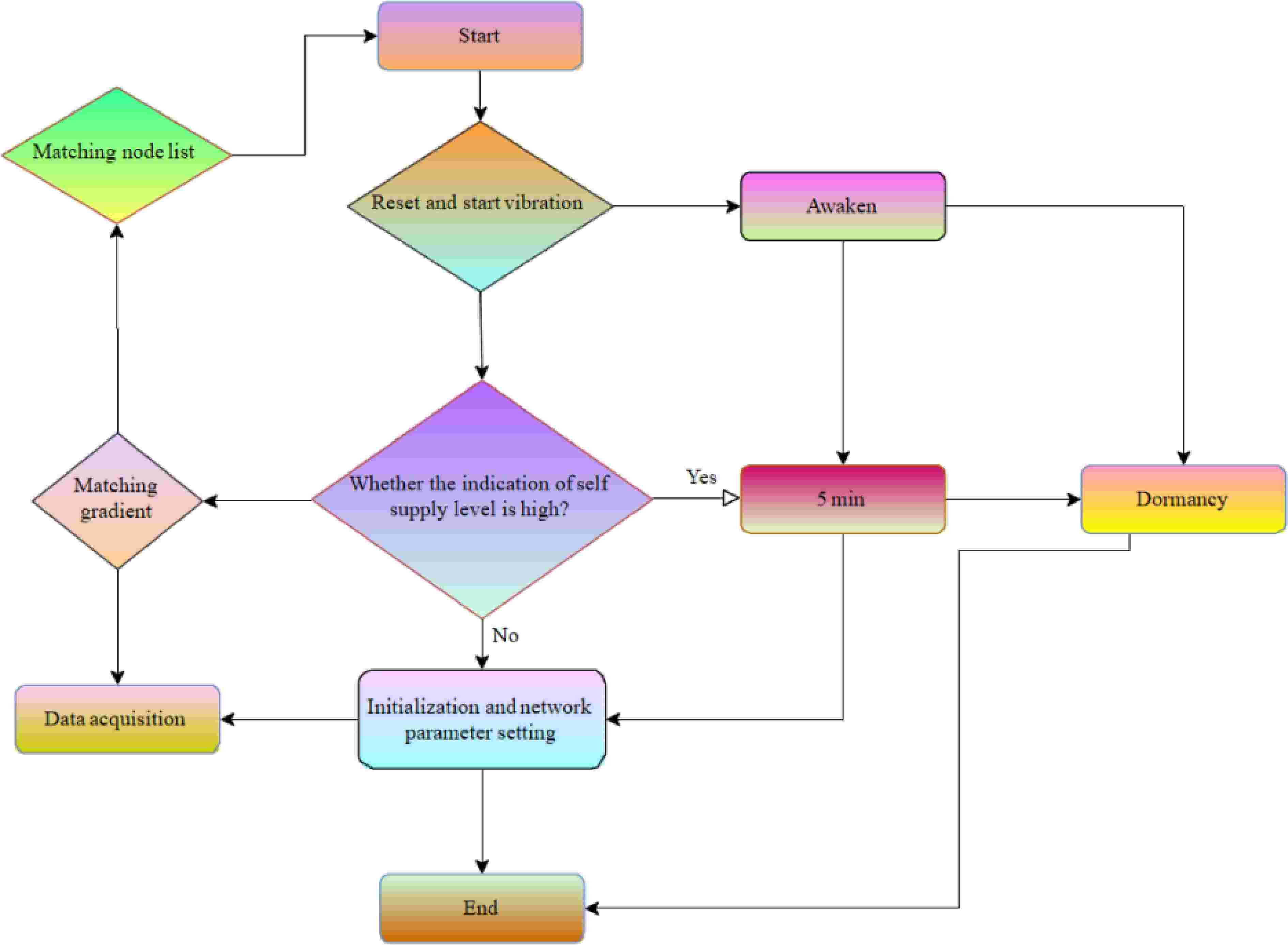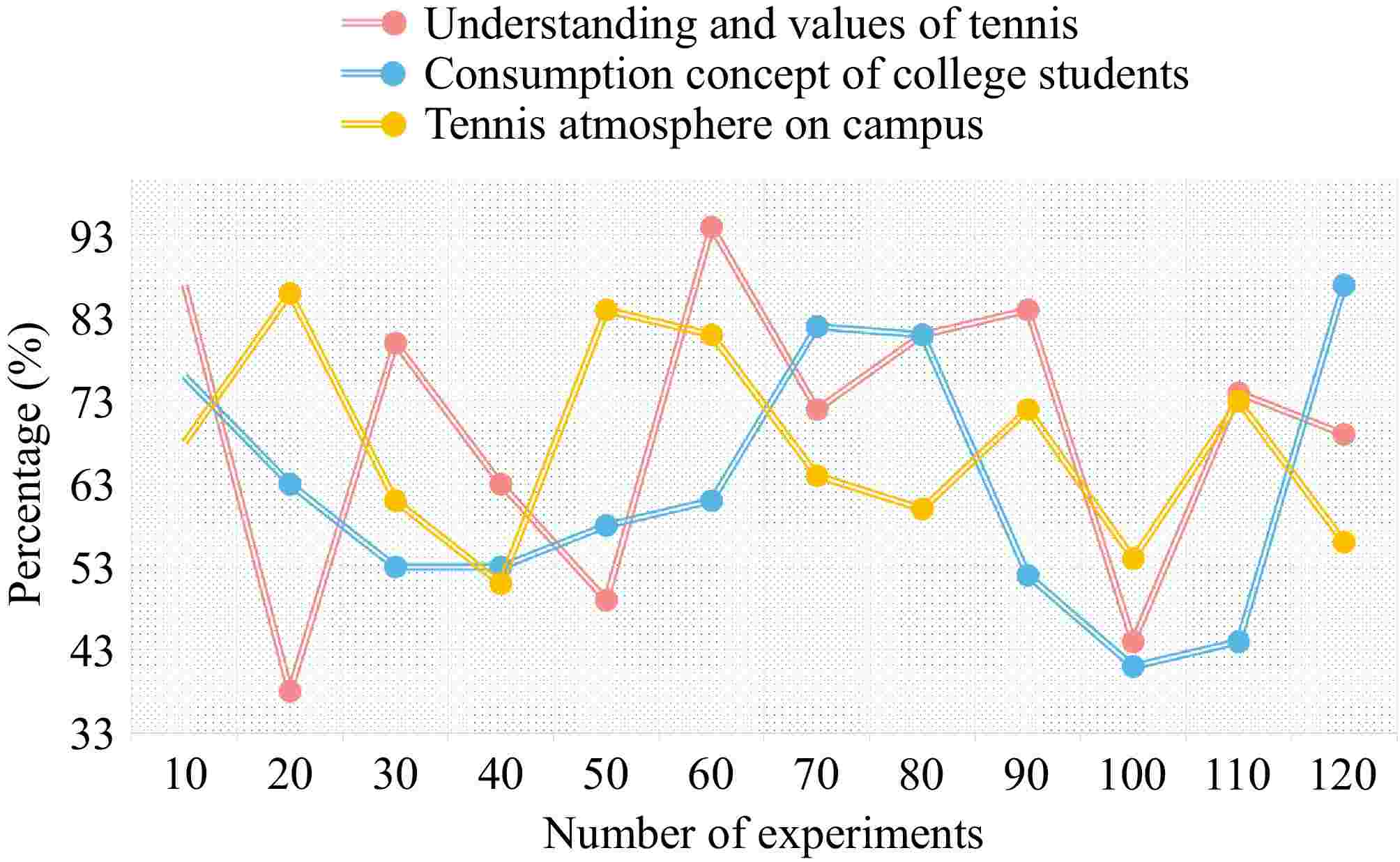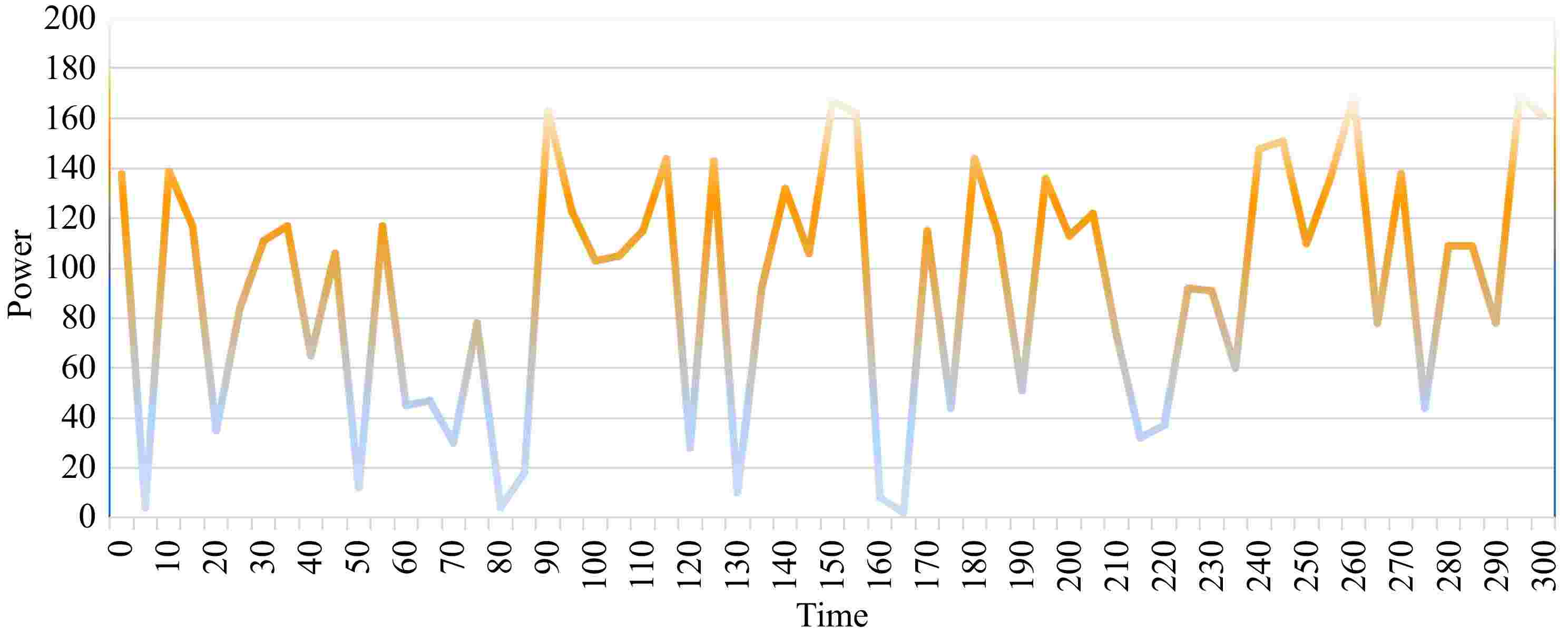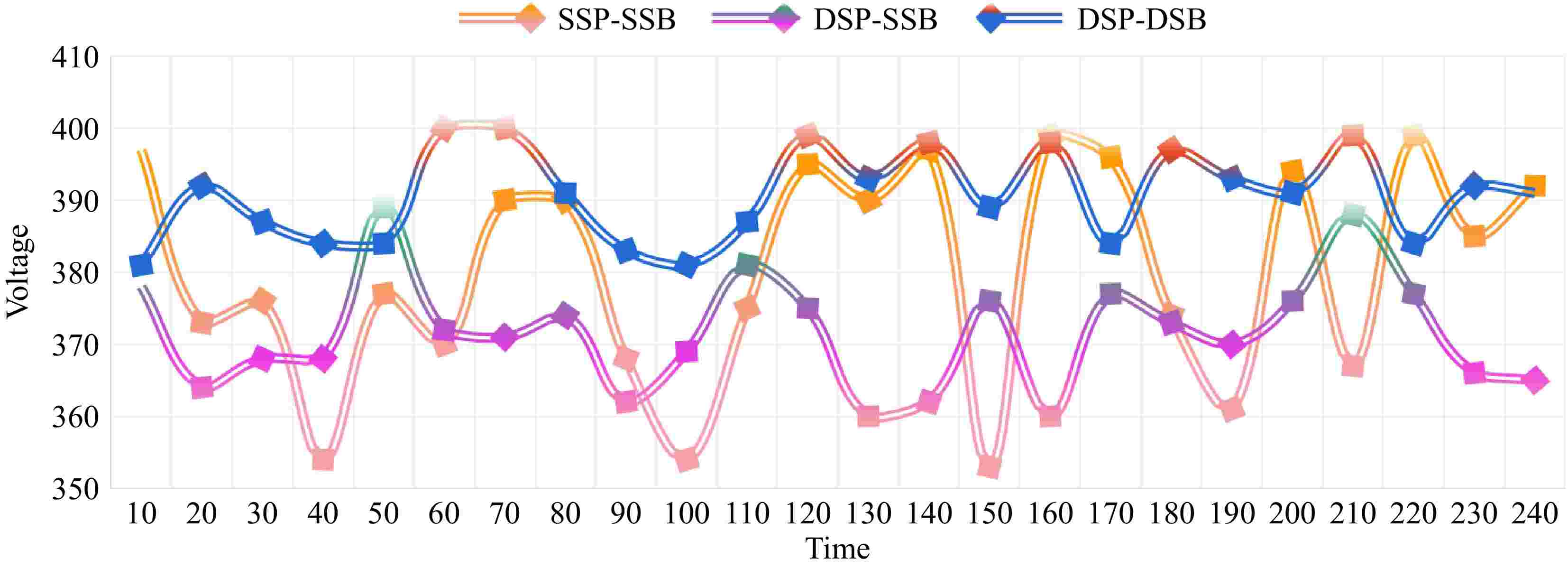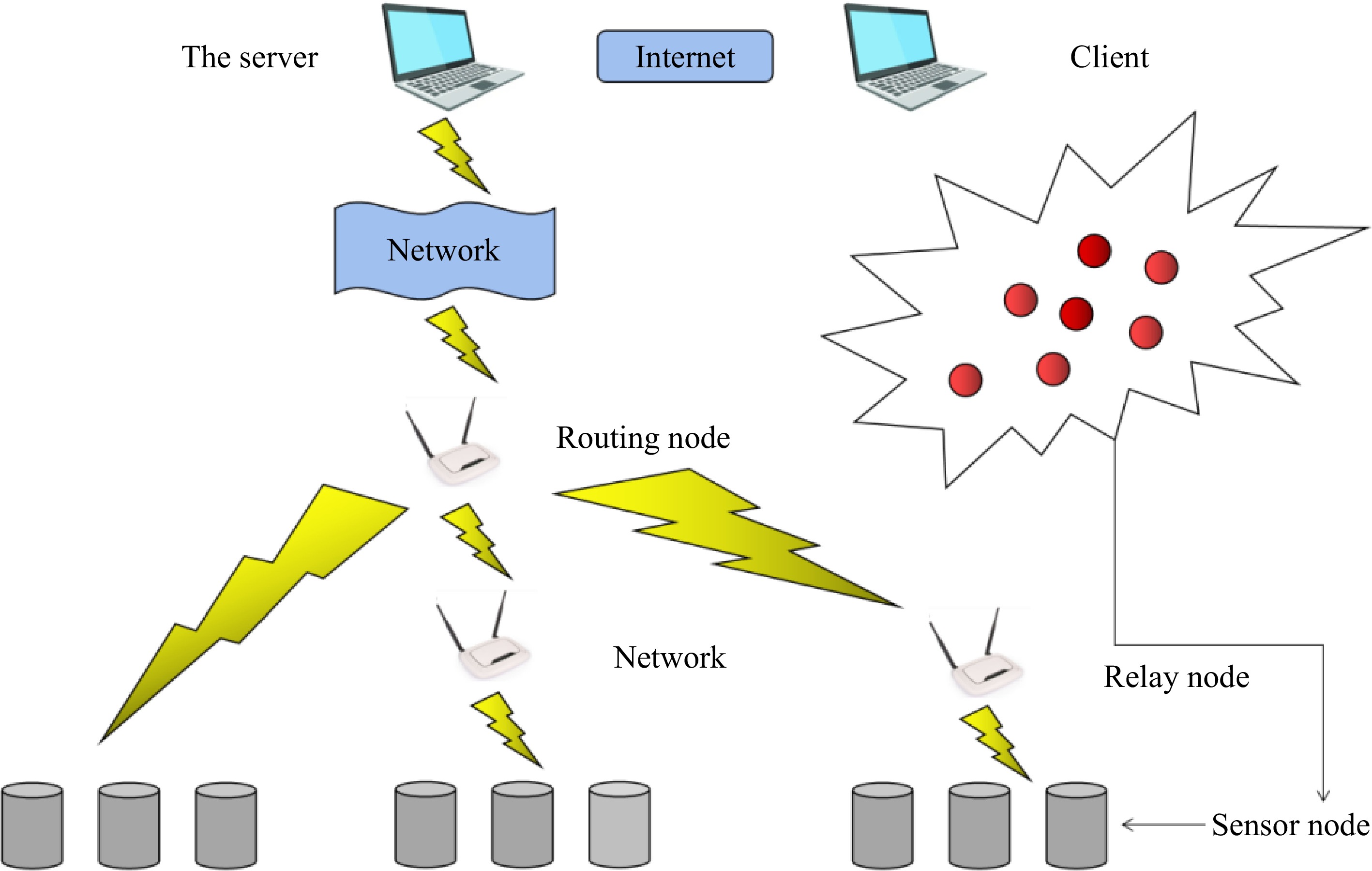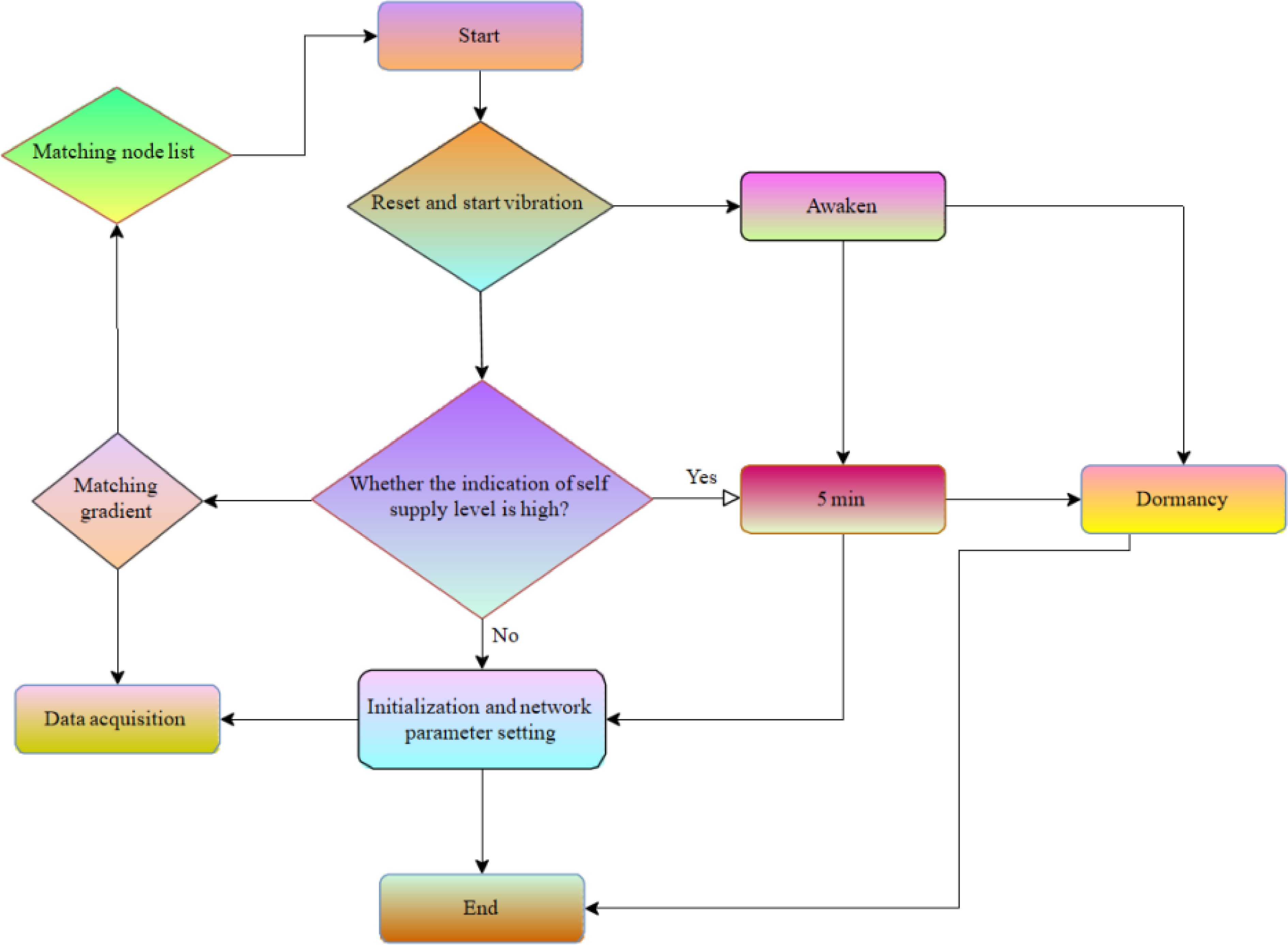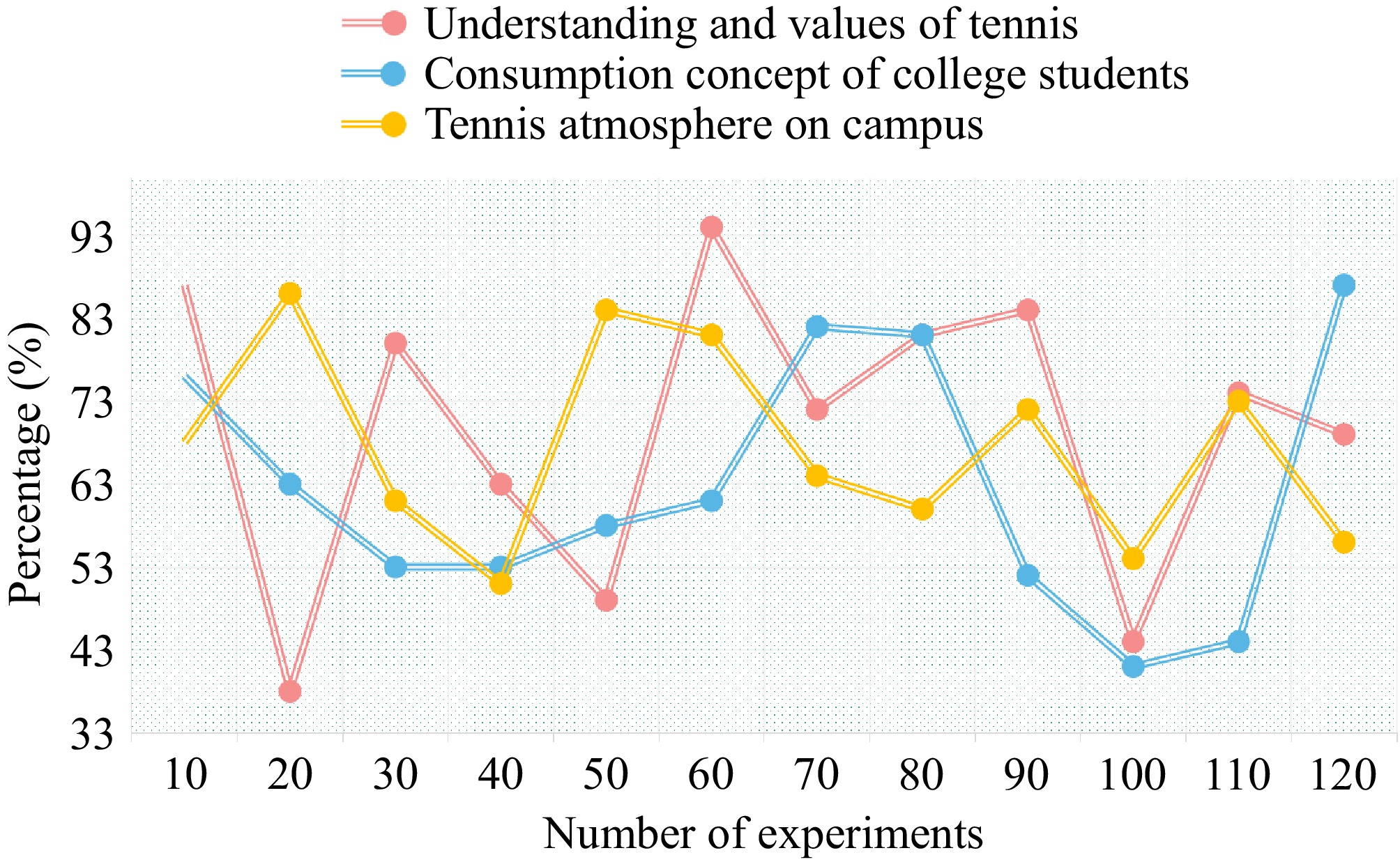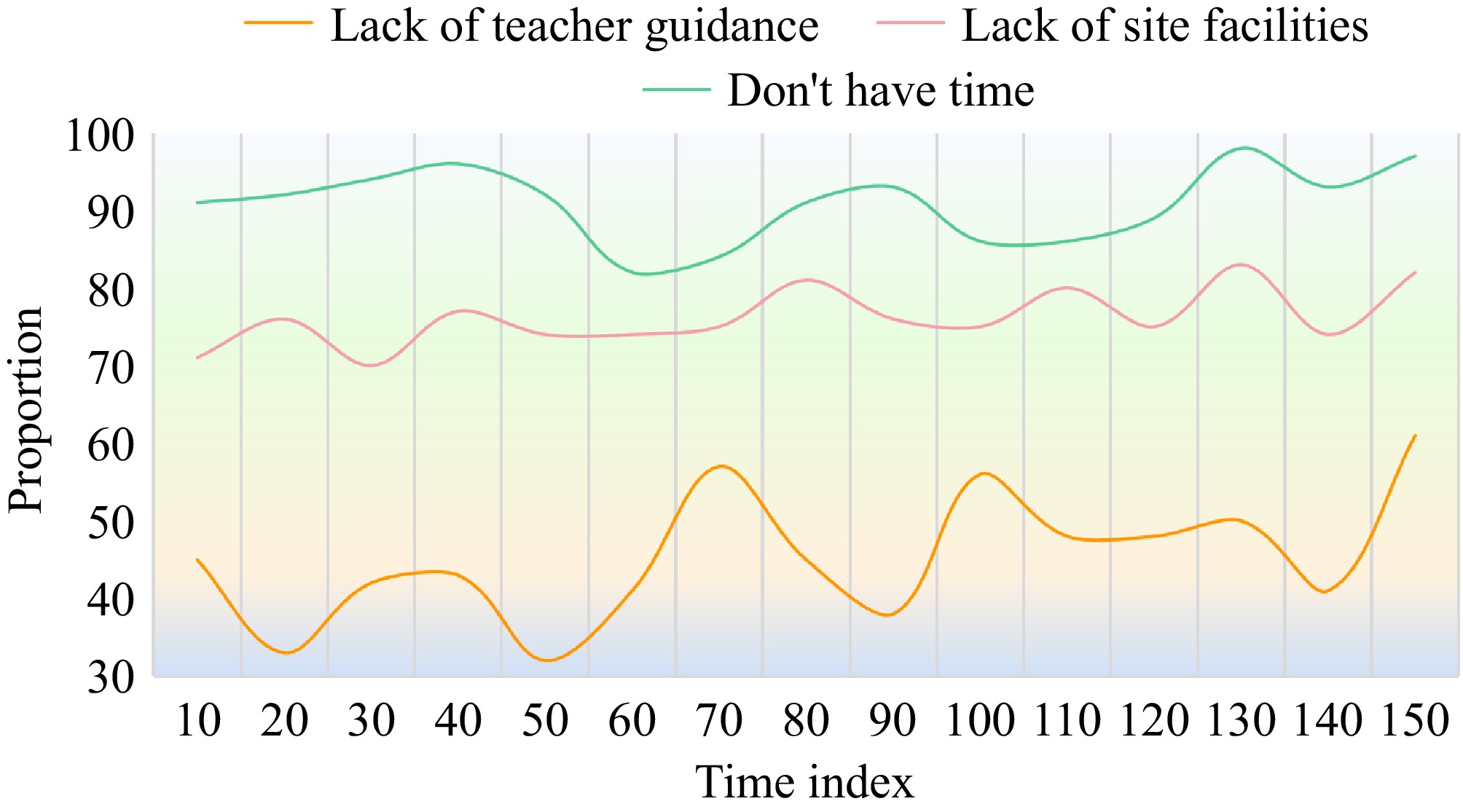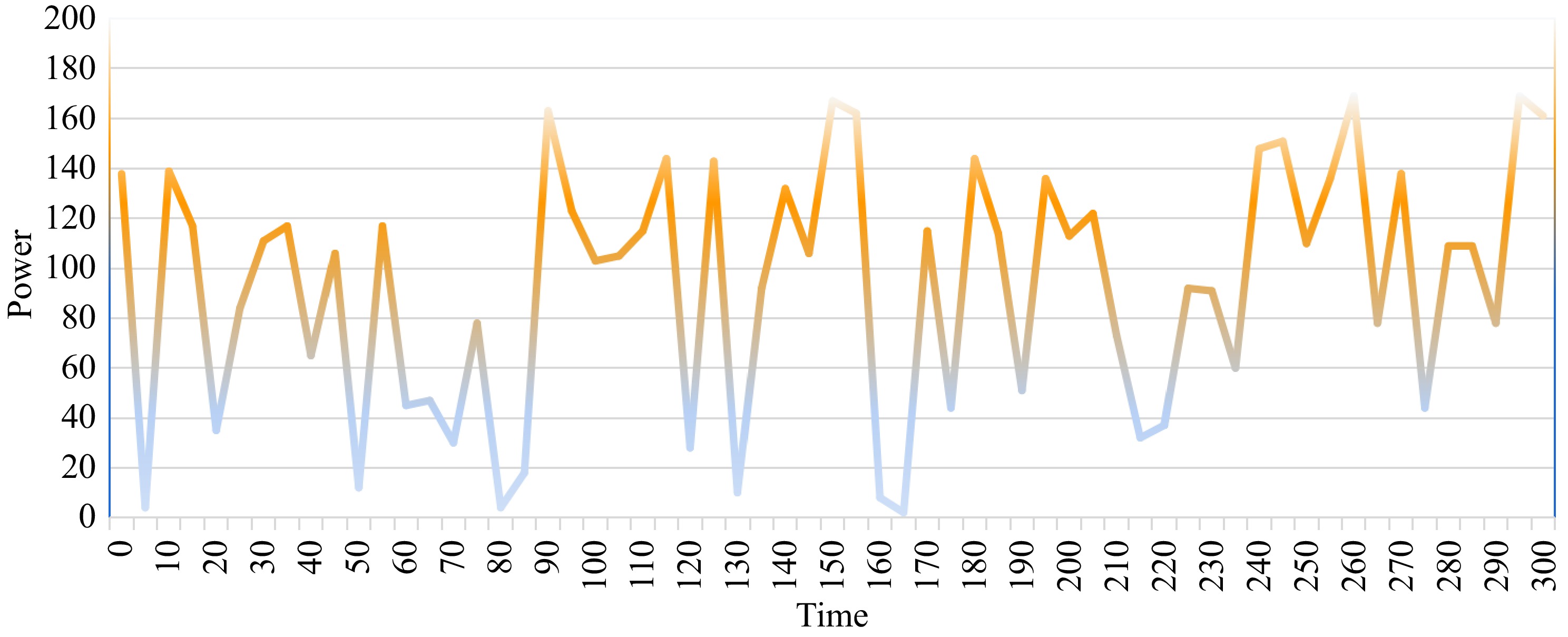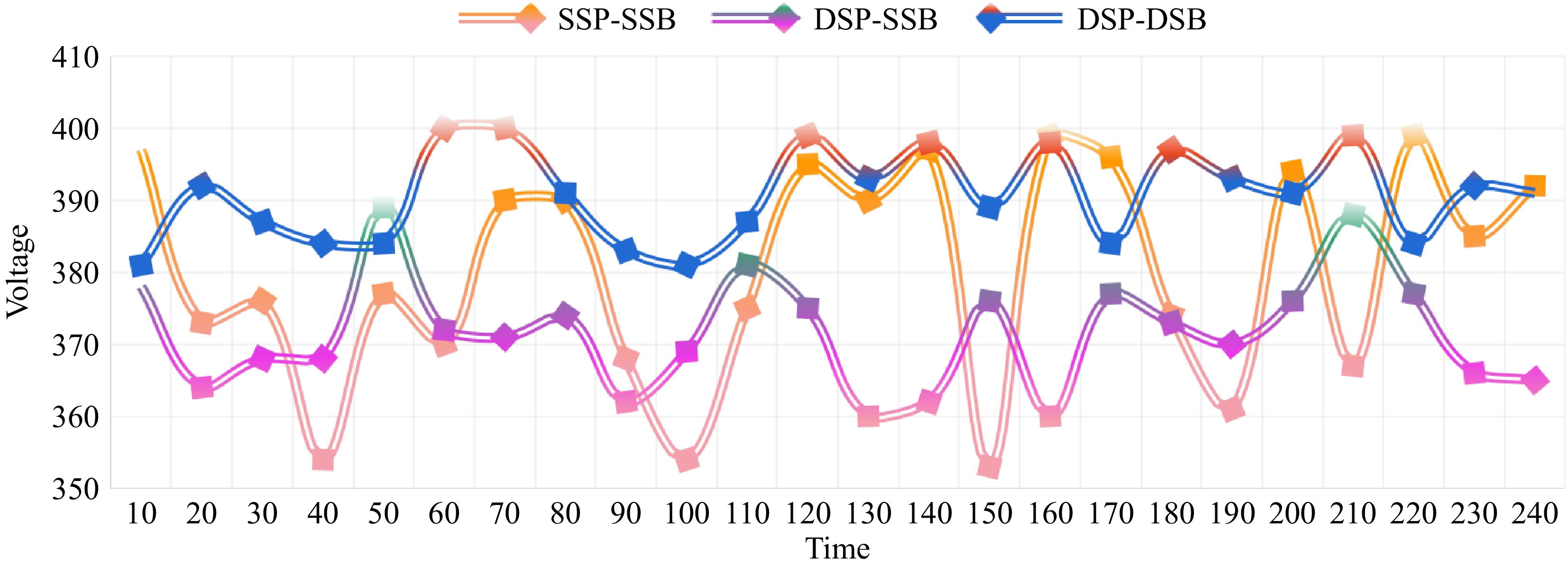-
With the rapid development of technology, human society is entering a new digital era, and the rise of 6G networks marks another revolutionary leap in communication technology[1]. The 6G network provides unprecedented opportunities for the widespread application of the Internet of Things (IoT) with its ultra-high speed, ultra-low latency, ultra-high connection density, and ultimate reliability[2]. In this context, wireless self-powered sensors, as one of the key technologies in the sensing layer of the IoT are gradually becoming a bridge connecting the physical world and the digital world, bringing profound changes to various industries[3]. Tennis, as a sport with a long history and deeply loved by people around the world, its development and popularization not only rely on the improvement of athletes' skills and the organization and management of events, but also on the support and promotion of technology. Traditional tennis monitoring methods often rely on manual observation and limited data collection equipment, making it difficult to achieve comprehensive, real-time, and accurate monitoring of athlete performance, the competition process, and the court environment[4]. The emergence of wireless self-powered sensor networks has opened up new avenues for intelligent monitoring and management of the sport of tennis. Wireless self-powered sensor networks achieve self-powering by collecting energy from the surrounding environment, such as solar energy, vibration energy, etc., without the need for external power support, thereby reducing deployment costs and maintenance difficulties[5]. 6G networks are expected to achieve higher data transmission rates than 5G while achieving lower network latency. This is crucial for real-time data analysis in tennis, ensuring that the data collected by sensors is transmitted almost without delay to data centers or the cloud for analysis, providing real-time feedback to coaches and athletes. 6G networks support more device connections and higher data density, which is particularly important for large-scale deployment of wireless self powered sensor networks. At the same time, combined with the high-performance communication capabilities of 6G networks, these sensors can transmit monitoring data in real-time and accurately to the cloud or local processing centers, providing strong data support for data analysis and decision support. In tennis, wireless self-powered sensor networks can be widely used in various aspects such as athlete training monitoring, game process analysis, and field environment assessment. For example, by installing sensors around tennis rackets, nets, or courts, real-time monitoring of athletes' hitting strength, speed, angle, and other parameters can be achieved, analyzing tactical applications and athletes' physical fitness during matches[5]. At the same time, it can also monitor environmental factors such as humidity, temperature, and lighting on the field, providing athletes with the best competition conditions[6]. In addition, with the continuous development of technologies such as big data and artificial intelligence, the massive data collected by wireless self powered sensor networks can also be deeply mined and analyzed through algorithm models to discover hidden movement patterns, optimize training plans, and improve competitive levels. The application of these technologies will not only help improve the individual abilities of athletes, but also promote the overall competitive level and popularization of tennis[7]. Dynamically adjusting modulation and coding schemes based on the channel conditions of 6G networks can maximize data transmission rate and reduce the bit error rate. AMC technology can automatically select the appropriate modulation order and coding rate based on the signal-to-noise ratio (SNR) of the signal, thereby reducing energy consumption while ensuring transmission quality.
The wireless sensor network utilizing self-powered technology, combined with the high-speed and low latency characteristics of 6G network, can achieve comprehensive monitoring and analysis of tennis sports. These sensors do not require an external power source and can self-power by collecting energy from the surrounding environment, thereby reducing deployment costs and maintenance difficulties, making intelligent monitoring of tennis sports possible. In tennis training and competition, these sensors can capture key data such as players' hitting movements, movement trajectories, and physical fitness status in real-time, providing accurate feedback and analysis for coaches and athletes[8]. More importantly, the application of wireless sensor networks in tennis is not limited to technological advancements but also has a positive impact on students' overall quality. By participating in tennis, students not only exercise their bodies but also learn how to quickly respond, and maintain balance and stability in rapidly changing environments. These abilities are equally crucial for their daily lives and future development. In addition, tennis emphasizes the cultivation of excellent qualities such as teamwork, honesty and trustworthiness, and tenacious struggle. With the assistance of wireless sensor networks, these qualities can be more intuitively and quantitatively reflected and strengthened[9]. In terms of data transmission, 6G networks provide powerful communication support for wireless sensor networks. In the face of data redundancy issues that may arise from multiple source nodes, data fusion technology under central routing modes can effectively reduce the amount of data in the data transmission link, improve transmission efficiency, and reduce energy consumption. This energy-saving effect not only extends the service life of sensor networks but also provides strong support for long-term monitoring and data analysis of tennis sports. This article not only explores the application of wireless self-powered sensor networks in tennis from a technical perspective but also deeply analyzes the impact of non-technical factors such as social culture and personal cognition on technological innovation applications. This comprehensive research perspective makes the conclusions of this article more comprehensive and in-depth, providing multidimensional references for the intelligent management of tennis. The practical application effect of wireless self-powered sensor networks in tennis was verified through experimental data, and the key factors affecting the effective operation of sensor networks were revealed. These experimental data not only enhance the credibility of the conclusions in this article, but also provide strong support for subsequent technical improvements and optimizations. Applying wireless self-powered sensor networks to the monitoring, analysis, and management of tennis is a completely new application scenario. By monitoring real-time sports data of tennis players, environmental parameters of tennis courts, etc., more accurate training feedback and competition strategies can be provided for coaches and athletes, thereby improving the competitive level and viewing experience of tennis.
The main innovations put forward in this paper are as follows:
(1) The related content of self-powered sensor nodes are introduced, and a self-powered wireless sensor network monitoring system is constructed. A self-powered wireless sensor network monitoring system consists of sensor nodes, relay nodes, routing nodes, servers, and clients. The sensor node monitors the temperature and current of the wire. At the same time, to solve the problem that the sensor node can't supply energy continuously, the self-power technology is adopted to convert the electromagnetic energy around the monitoring wire into electric energy to supply energy for the sensor node.
(2) The development countermeasures of tennis are discussed. The traditional training concept requires athletes to have the ability of continuous multi-beating, so athletes practice and fight for a long time in training. Starting from the laws of competitive tennis and the development status of Chinese tennis, we will gradually realize the transformation from a national system to marketization. Efforts should be made to explore the tennis market, implement the club model, obtain excellent talents and substantial funds from the market, and at the same time, turn the market pressure into power to further promote the development of competitive tennis in China.
-
Cho et al. put forward that the development of tennis still needs a soft environment, which refers to people's lifestyle, behavior rules, value standards, and way of thinking that are suitable for the development of tennis. The traditional cultural concept and modern civilization are exerting a subtle influence on this soft environment[10]. Zarepour et al. put forward that tennis players should have the characteristics of quick neural response, good cardiopulmonary function, and strong anaerobic metabolism. As the service speed of tennis matches is getting faster and faster, the reaction time of the players to receive the service is very short. It is necessary to make a correct judgment on the incoming ball in a very short time and take corresponding measures at the same time. Therefore, tennis players must have quick reactions[11]. Liang et al. put forward that tennis meets the needs of students' health and beauty, promotes students' physical and mental health, and helps to improve students' overall quality and quality of life. Today, when quality education is advocated, playing tennis is an effective means to improve students' overall quality[12]. Diaz et al. put forward that China's existing tennis sports mode is also learned from the experience of other sports events at home and abroad, and it has been grouped out step-by-step. We can't only see the Olympic champion sports but also pay attention to the potential advantage sports and sports that are beneficial to people's health[13]. Rokonuzzaman et al. put forward that tennis players should not only have the common qualities of table tennis and badminton players, such as good sensitivity, quick reaction, good explosive force, quick movement, and good psychological quality but also can start, stop, and change direction quickly to meet the requirements of running left and right, stopping and changing direction on the court. For tennis, flexibility, speed, and explosive strength are the most important qualities[14]. Kim et al. put forward that a breakthrough in tennis requires the strong support and assistance of all sectors of society, and at the same time, it needs the continuous efforts of college teachers, not only to improve their professional quality, but also to improve their scientific research ability, and to lead students to actively participate in the publicity and promotion of tennis[15]. Agarwal et al. put forward that tennis requires a lot of resources such as venues and facilities, but the school has advantages in this respect, which is a remarkable feature that the school is superior to other fields. The school is a place where the population is more concentrated, and the students' understanding ability and greater mobility after graduation play a more active role in promoting the development and popularization of tennis[16]. Luca & Paolo suggested that tennis is also beneficial to promote the construction of campus sports culture. Under the educational philosophy of 'health first' and 'lifelong physical education', with the aim of improving students' physical health, tennis should be vigorously carried out according to the requirements of the society for today's college students[17]. Chincoli & Liotta put forward that the world's top athletes can hit the tennis ball at a speed of more than 200 km/h, which requires athletes to have enough strength to hit such a high ball speed[18]. Kamimura & Tomita put forward that as a strong province of sports, whether it also plays a special role in the development and promotion of tennis, and what the current situation of tennis is, whether it is significantly different from other provinces, is an aspect worthy of study[19].
In this paper, wireless and self-powered sensor networks are proposed to study tennis, conduct a comprehensive investigation on the current situation of tennis, find out the existing problems and deficiencies, and put forward suggestions and countermeasures. Multi-angle, all-round, and in-depth excavation of the law of tennis, constantly enrich the content of the research field of tennis, improve the theoretical system of the development of tennis in Colleges and universities, gradually improve the level of tennis scientific research, and quickly shorten the gap between tennis and other sports in the development level of colleges and universities. This study provides a theoretical basis and practical guidance for colleges and universities that have not carried out and have carried out tennis. The most important techniques in tennis are serving and receiving, forehand and backhand at the bottom line, volley in front of the net, and so on. For example, the service technology should have a better 'beyond the instrument' action, which has high requirements for the strength of lower limbs, hip joints, waist and abdomen and upper limbs, as well as the coordination of the whole body. The development of modern tennis is tested by self-powered wireless sensor network technology. This trend shows that strength has become an important quality of excellent athletes. Even technical athletes must have enough strength, otherwise they can't stand on the tennis court. The wire temperature and current data collected by the sensor node are sent to the routing node through wireless transmission, or send the data of the sensor node to the relay node, and then send the data collected by multiple relay nodes to its superior routing node. The hardware design of the node in the self-powered network needs to include the energy acquisition module of the node, and the software design needs to correspond to the hardware design, taking full account of the energy acquisition in the node. And the network protocols need to be considered differently. Self-powered wireless sensor networks should fully consider the energy collection of nodes, so it is necessary to redesign the appropriate routing protocol. The nodes in the self-powered network solve various difficulties encountered in the development of tennis, give full play to the role of tennis teaching resources with our wisdom, and quickly improve the tennis level of college students, so as to promote the sustainable, healthy, and orderly development of tennis in Colleges and universities in Jiangsu Province (China) and even the whole country.
-
As an innovative evolution of traditional wireless sensor networks, self-powered wireless sensor networks have the core advantage that their nodes can autonomously collect and store energy from the external environment, such as solar energy, vibration energy, or electromagnetic energy, to drive information transmission and processing processes, eliminating the dependence of traditional wireless sensor networks on battery power. The self-powered sensor node first captures energy from the surrounding environment through an energy harvesting module. For electromagnetic energy, this typically involves using antennas or magnetic materials to capture electromagnetic waves or magnetic field energy in space. The energy harvesting module may include specialized circuits or devices, such as magneto-electric transducers (which convert magnetic field changes into electrical signals) or electromagnetic induction coils (which use Faraday's principle of electromagnetic induction to convert changing magnetic fields into electrical energy). The collected energy (originally in the form of electrical signals or weak currents) needs to be processed by conversion circuits (such as rectifiers, regulators, etc.) to convert it into stable direct current (DC). Empowered by 6G network technology, this feature has been further enhanced and expanded, bringing new application prospects to the field of tennis. In the context of tennis, a self powered wireless sensor network monitoring system consists of carefully designed sensor nodes, high-performance relay nodes, intelligent routing nodes, powerful servers, and convenient clients. These nodes work together to form an intelligent monitoring network that covers the tennis court and surrounding environment. Sensor nodes are not only responsible for monitoring environmental parameters such as temperature and humidity in tennis courts, but also for accurately capturing key data such as players' hitting strength, speed, angle, and movement trajectory, providing strong support for athletes' technical analysis and training optimization[20]. It has designed an energy management algorithm that dynamically adjusts the working mode and power consumption level of sensor nodes based on their real-time energy consumption and energy collection status. For example, when there is sufficient energy, the sampling frequency and data processing capability of nodes can be increased. When there is insufficient energy, the power consumption of the node is reduced, and even enters a sleep state to save energy. Energy management algorithms can also be combined with predictive models to predict future energy supply based on historical data and current environmental parameters, to make adjustments in advance to cope with possible energy shortages. It is particularly worth mentioning that to solve the problem of continuous power supply for sensor nodes in tennis courts, the system cleverly adopts self-powering technology. By collecting electromagnetic energy from the surrounding environment of the tennis court (such as electromagnetic radiation generated by lighting systems, broadcasting systems, etc.) and efficiently converting it into electrical energy, a stable and reliable energy supply is provided for sensor nodes. This green and sustainable power supply method not only reduces the maintenance cost of the system, but also reduces the impact on the environment, reflecting the harmonious coexistence of technology and environmental protection.
The structure diagram of self powered wireless sensor network monitoring system is shown in Fig. 1.
Both receiving and transmitting data consume energy, and the energy consumed by receiving data is less than that of transmitting data. The energy consumed by receiving data between transmitting nodes can be considered as a fixed value, and the energy consumed by transmitting data is related to the transmission distance between nodes. A formula can be used to express the energy consumption of transmitting a data packet.
E=E0+Eunit×d2 (1) where, E represents the energy required for packet transmission, E0 represents the fixed energy required to obtain information, and Eunit represents the energy required to transmit information within a unit distance. d represents the data transmission distance between two nodes, and d2 represents that the energy required for data packet transmission is directly proportional to the quadratic power of the distance between nodes.
The energy of nodes in self powered network changes with time, and the energy model of sensor nodes in the network is:
Pn(τ)=min(Pn(τ−1)) (2) where, Pn(τ) represents the energy value at the time of node τ, and Pn(τ−1) represents the residual energy value before node τ.
The routing node reprocesses the data of temperature, current, node number of the acquisition location, etc., and forms a data group. Finally, the data group is sent to the remote server through the public network, and the client can receive the data from the server through the Internet network, finally realizing the remote real-time monitoring of the wire temperature and current. When supplying power, it is necessary to consider whether the place where the wireless sensor network node is used can normally receive sunlight. When sunlight can normally illuminate, the sensor network can use solar panels to receive normal light. After passing through the voltage stabilizing circuit, on the one hand, it charges the supercapacitor, on the other hand, it charges the rechargeable lithium battery, and the charging and discharging times of the lithium battery can reach more than 500 times[21]. Therefore, the self-powered wireless sensor network like the traditional wireless sensor network, is a distributed intelligent network system. It is a distributed multi-hop wireless sensor network formed by randomly distributed sensor units, data processing units, and sensor nodes of wireless communication units through self-organization. The sensor can sense the required information from the outside and transmit it. Sensors are divided into source nodes and transmission nodes. Source nodes can collect information from the outside world or transmit information, while transmission nodes can only be used for intermediate transmission of information[22]. The aggregation node is used to summarize the information collected by the sensor nodes and transmit this information to the control management node, which is used to send control instructions and judge the correctness of the information. In the whole system, the single-chip microcomputer software detects the voltage of different power supply terminals, thus controlling the selector to connect different power supply terminals, which can greatly delay the charging and discharging process of lithium batteries and improving the durability of the system.
Sensor node power consumption
-
With the rapid development of 6G network technology, a new monitoring system based on self-powered wireless sensor networks designed specifically for tennis has emerged. The sensor nodes in this system innovatively adopt self-powered technology, which collects energy from the tennis court and surrounding environment (such as solar energy, vibration energy, or electromagnetic energy) to supply the nodes with the energy needed for information collection and processing, thereby solving the battery life problem faced by traditional wireless sensor networks during long-term operation[23]. In the 6G network environment, this self-powered wireless sensor network no longer considers node energy as the primary factor, but focuses on how to optimize the performance of routing protocols, including improving throughput, reducing packet loss rate, reducing latency, and efficiently managing node energy collection and distribution. To achieve this goal, the system is equipped with an advanced power management and control module, which is driven by a microcontroller and responsible for real-time monitoring of the power status of the main energy storage (such as supercapacitors) and secondary energy storage (such as rechargeable lithium batteries), and intelligently scheduling power supply strategies based on current energy levels to ensure that sensor nodes can work stably online for a long time[24]. To further enhance the reliability and stability of the system, a multi-path communication mechanism independent of nodes has been designed. When the main communication path is interrupted due to a fault, the system can quickly activate the backup path and prioritize selecting the path with the least number of shared nodes as the suboptimal path to reduce the impact of a single point of failure on the entire network. In addition, the system also adopts an energy aware path selection strategy, which intelligently analyzes the energy consumption of each node balances the energy consumption in the network and ensures the long-term operation of the overall network[25]. If the sensor node is always in the active state, the energy consumption of the sensor node is very large. To reduce energy consumption, the sensor node is designed in two states: active and dormant. The working process of the sensor node is shown in Fig. 2.
In the active state, the self-powered level indicates high, and the sensor node performs data acquisition and wireless data transmission. When the self-power level indicates low, the sensor node goes to sleep, and the node is in a low power consumption state. It consists of three parts: sensor node, sink node, and control management node. In wireless self-powered communication sensor networks, there are various specific protocols or algorithms for sensor nodes to form self-organizing networks through multi hop relays, which play a key role in ensuring the reliability and efficiency of data transmission. LEACH is a low-power adaptive clustering routing algorithm that evenly distributes relay communication services by randomly selecting cluster heads (CHs), thereby extending the network lifespan. Reduce data transmission redundancy and improve data transmission efficiency through clustering. At the same time, by rotating the cluster leaders to balance energy consumption and avoid certain nodes running out of energy prematurely. The sensors are randomly distributed in a certain area, and the nodes form a self-organizing network through the multi-hop relay. After collecting data, they are transmitted to the sink node. Finally, the sink node transmits the information to the task control and management node through the Internet or other networks. The bandwidth of each channel is 2 MHz, and the frequency of each channel is the lowest frequency of the allocated channel. The center frequency can be calculated by the following formula:
fM=906+2×(N−1) (3) Similarly, the channel center frequency of the frequency band can be calculated by the following formula:
fM=2405+2×(N−1) (4) where, fM is the center frequency of the channel and N is the channel number.
The power consumption in power-down mode is very low, and the relationship between output voltage and ambient temperature is shown in the following formula:
Vout=T×ΔV/ΔT+Vos (5) where, Vout is the output voltage of the temperature sensor, T is the external ambient temperature,
ΔV/ΔT As long as the collected data is valid and complete, the node can increase the sampling period to reduce the power loss. The energy loss ESEN of the sensor meets:
ESEN=ESEN−gel+ESEN−con+ESEN−ad (6) Include that energy loss ER of data process, the energy loss ECPU of the microprocessor module satisfies:
ECPU=ECPU−act×ηCPU−act (7) When the average current is equal to the working voltage, the energy loss per unit time of the wireless communication module meets the requirements:
ECOM=IZ×UZ (8) If the total energy consumption of the monitoring node is equal to the sum of the energy consumption of each part, there is the total energy consumption of the monitoring node:
ESUM=ESEM+ECPU (9) By introducing a redundant energy supply, the system can quickly switch to backup energy when the main energy supply is insufficient or interrupted, thereby avoiding sensor node failure due to energy depletion and improving the stability and reliability of the entire network. In complex and ever-changing environments, the energy supply redundancy coefficient helps the system better adapt to the uncertainty of energy supply, such as changes in light intensity, weather conditions, etc., ensuring that sensor nodes can work continuously and stably. To ensure that the sensor monitoring nodes have sufficient energy, the energy supply redundancy coefficient is introduced, and they are:
Pe=λ×ESUM (10) In terms of power control technology, the node is set to switch periodically between working mode and low power consumption mode by software, to meet the requirement of reducing energy consumption. It is also necessary to verify that the lifetime of nodes can meet the lifetime standard of nodes in wireless sensor networks.
-
The channels of tennis information are very rich. The survey is shown in Table 1.
Table 1. Information sources of tennis knowledge of college students.
Serial number Information source Percentage 1 TV news 57% 2 Teachers and classmates 45% 3 Network 37% 4 Advertising 27% From Table 1, it is found that college students access to tennis knowledge and information mainly includes: TV news, teachers and classmates, internet, advertising, etc. Among them, 57% get information from TV news, 45% from teachers and classmates, 37% from the internet and 27% from advertisements, which shows that the society has increased the publicity of tennis.
The hardware facilities of tennis can't meet the needs of tennis teaching, the curriculum construction is lagging, and the quality of tennis teaching is not high, the teaching methods and means are outdated, the teachers are lacking, the construction of professional tennis teams is worrying, the construction of tennis associations is imperfect, the organization and management of tennis competitions are unreasonable, the influence of tennis and campus culture is vague, and the lifelong sports consciousness of tennis is weak. The self-powered wireless sensor network is used to analyze the causes of this situation, and the understanding and values of tennis, the consumption concept of college students and the tennis atmosphere on campus are used for experimental analysis. The experimental results are shown in Fig. 3.
It can be seen from Fig. 3, that the factors affecting tennis by self-powered wireless sensor networks show a diversified trend. From the data, it can be found that when the number of experiments reach 50, the most important factor is the percentage of tennis atmosphere on the campus, which is 84%, followed by the percentage of college students' consumption concept, which is 58%, followed by the percentage of understanding and values of tennis, which is 49%. From these investigations, we can see that the hardware facilities of the tennis court under the power supply wireless sensor network are still the bottleneck restricting tennis and the attention of the school leaders to tennis is also the main factor affecting tennis. Therefore, all links of tennis should be taken into account, and we can't omit one or the other.
A survey was conducted on 'what factors may affect your participation in tennis'. The survey results are shown in Table 2.
Table 2. Influencing factors of college students' participation in tennis.
Serial number Influencing factor Percentage 1 Site facilities 76.2% 2 Campus tennis culture atmosphere 51.3% 3 Tennis organization and management 38.4% 4 College students' sports consumption consciousness 28.2% As can be seen from Table 2, the main factors affecting college students' participation in tennis includes: a lack of knowledge of tennis, factors of venues and facilities, lack of profound campus tennis culture, lack of organization, lack of professional teachers, and other problems. Some students believe that the threshold of tennis is too high. These students are not rich and have low consumption ability. Another section of students have had a great interest in another sport, so it is difficult to transfer their interest to tennis.
Tennis takes up a large proportion of students' spare time, but some students who like it very much can't play tennis in their spare time, or even can only look at the ball and sigh. The proportion of not playing tennis is experimentally analyzed by using the reasons of: lack of teacher guidance, lack of venue facilities, and lack of time. The investigation results are shown in Fig. 4.
As can be seen from Fig. 4, the self-powered wireless sensor network restricts the development of tennis in the spare time of colleges and universities for three reasons: lack of teacher guidance, lack of venue facilities, and lack of time. Among the three reasons, the most important factor affecting the development of tennis in colleges and universities is lack of time. When the time index reaches 80, it accounts for about 95%. The second is the lack of venues and facilities, accounting for about 64%, and the last is the lack of teacher guidance, accounting for about 48%. Without time, students can't learn self-powered wireless sensor network tennis technology well, and students in tennis courts can't learn tennis technology well. These two conditions can't guarantee that students can maintain a strong interest in tennis.
Simulation analysis
-
In this experiment, the protocols are simulated and compared based on the solar energy collection environment. The energy change of a solar node in a day is shown in Fig. 5.
Because the energy of nodes is affected by the change in the sun, to make most nodes in the network have an effective energy collection rate, the simulation time-period from 9:00 a.m. to 5:00 p.m. in a day is selected, and the energy collection rate of nodes in this time-period is more than 35 MV.
According to the investigation of the situation of a school in the whole province, the construction materials of tennis courts at present include hard ground, sandy land, grass, and plastic, among which plastic courts are the majority, followed by hard ground. It may be that most tennis courts are newly built in recent years, and their grades are relatively high. The survey results are shown in Table 3.
Table 3. Tennis courts owned by a school.
Number of tennis courts Percentage of colleges and universities > 8 21.5% 4−8 51.3% < 4 27.3% It can be seen from Table 3 that only 21.5% of colleges and universities have more than eight sites, 51.3% of colleges and universities have 4−8 sites and 27.3% of colleges and universities have less than four sites. From the ratio between the number of venues and the number of students in colleges and universities with tennis courts, the proportion of provincial key colleges and universities is relatively high, reaching 1:3624, and that of general colleges and universities is the lowest, reaching 1:2953, which is far lower than the allocation requirements of the Ministry of Education on tennis courts.
With the continuous improvement of the market economy, the use of university stadiums and gymnasiums is also undergoing continuous reform. To make the sports venues better serve the public, they have implemented the paid use management strategy to achieve the purpose of maintaining the sports venues. The charging standards for paid use details are shown in Table 4.
Table 4. Tennis court charges of a school.
Hourly charge (CNY) Percentage < 10 10.7% 10−20 46.4% 20−40 28.7% > 40 13.8% From Table 4, it can be seen that the hourly fees charged to students of 20 or 10 CNY are 46.4% and 10.7% respectively, while those charging 20−40 CNY are 28.7% and those charged 40 CNY or above are 13.8%.
To obtain better performance, the algorithm proposed in this study is compared with the algorithm reported by Du[8] on the packet loss rate of tennis, the research by Du[8] is also an improvement of another algorithm based on the idea of maximum flow under the background of solar energy. This paper mainly compares the packet loss rate and the experimental results are shown in Fig. 6.
It can be seen from Fig. 6 that the improved routing protocol based on the idea of maximum flow in this section is better than the algorithm reported by Du[8] in terms of throughput. When the number of nodes is 28, the packet loss rate reported by Du[8] is 85.25%, and the packet loss rate of this method is 76.18%. It shows that the routing protocol in this paper can indeed improve the network throughput, and with the continuous increase in the number of nodes, the improvement effect of tennis network throughput becomes increasingly obvious.
To analyze the working performance of three types of solar power supply systems, the battery pack charge and discharge experiments were carried out on the three systems at the same time in tennis. The charge and discharge of SSP-SSB, DSP-SSB, and DSP-DSB battery packs in a day are shown in Fig. 7.
From the measurement data in Fig. 7, it can be seen that SSP-SSB, DSP-SSB, and DSP-DSB can maintain the battery power well even when there is no light in general, but these two solar power supply systems are more likely to be overcharged. DSP-DSB solves the overcharging problem, and the charging and discharging of the battery pack is relatively stable. In Fig. 7, it should be observed that the charging curve of the DSP-DSB battery pack tends to stabilize or decrease after reaching a certain threshold (i.e. the maximum safe charging capacity of the battery). This indicates that the system has some form of charging control mechanism, such as a maximum power point tracking (MPPT) algorithm combined with a battery management unit (BMU), which can automatically adjust the charging rate or stop charging when the battery is close to full charge, thereby preventing overcharging. The stability of the DSP-DSB battery pack during discharge may also suggest the effectiveness of its charging management. If DSP-DSB exhibits a smoother discharge curve and moderate discharge depth during discharge, it may mean that the battery is well protected during charging, avoiding battery performance degradation caused by overcharging.
-
This article conducts a series of experiments on tennis to investigate the practical application effects of self-powered wireless sensor networks in 6G network environments. The experimental results show that the factors affecting the performance of the network in tennis court applications are showing a diversified trend. It is particularly noteworthy that when the experiment accumulates to a certain number of times (such as 50 times), it was found that the intensity of the campus tennis atmosphere became the primary influencing factor, accounting for 84%, followed closely by the acceptance of tennis sports by college students' consumption concepts (58%), as well as differences in understanding and values of tennis sports (49%). These data reveal that despite significant technological advancements, the inadequate hardware facilities of tennis courts and the high level of emphasis placed on tennis by school leaders remain key factors constraining its development. Based on the actual situation of Chinese athletes and the development trend of world tennis, a comprehensive development plan has been formulated, including clear tactical guidance ideas, technical development directions, personalized physical training plans, as well as scientific selection and reserve talent training mechanisms. The implementation of these plans will effectively promote the development of tennis in China, and also provide valuable experience and reference for the application of communication wireless self-powered sensors in more fields in 6G networks. Considering the dependence of wireless self-powered sensor networks on lighting, the design of tennis courts should fully consider lighting conditions. For example, reducing shaded areas through reasonable site layout ensure that sensor nodes can fully receive sunlight, thereby improving the efficiency of solar power supply. Install adjustable shading facilities around or on top of the tennis court to provide shade when needed and adjust according to weather and lighting conditions to maximize solar energy collection efficiency.
-
The authors confirm contribution to the paper as follows: Xie Y proposed an innovative idea of combining 6G network technology with wireless self powered sensor networks for intelligent management of tennis sports. Bai B designed and implemented relevant experiments to verify the practical application effect of wireless self powered sensor networks in tennis sports, and deeply analyzed the various factors that affect the operation of sensor networks. Zhao Y combined experimental results and socio-cultural factors to explore the application prospects and challenges of technological innovation in tennis sports management, providing valuable references for future research and application. All authors reviewed the results and approved the final version of the manuscript.
-
The experimental data involved in this study have been properly preserved and managed in accordance with the requirements of scientific integrity. To promote academic exchange and research development, we are willing to provide access to some or all experimental data to researchers in need, subject to compliance with relevant laws, regulations, and ethical requirements. Please contact the author of this article via email or other contact information regarding the specific methods and conditions of data sharing. We will negotiate and arrange accordingly based on the specific situation. It should be noted that in order to protect the privacy and rights of participants, some sensitive data will be anonymized or access will be restricted.
-
Here, we sincerely thank all the personnel who participated in and supported this study. Special thanks to the colleagues in the laboratory for their selfless assistance and valuable suggestions during the experimental design and implementation process, as well as the active participation and feedback of tennis enthusiasts on campus for this research project. It is your support that has enabled us to successfully complete this research. At the same time, we also want to thank the experts and scholars in the relevant fields for their preliminary research results, which have provided a solid theoretical foundation and reference basis for this study.
-
During the writing process of this study, all authors declared that there were no conflicts of interest that could affect the fairness of the research results. We strictly adhere to the principle of academic integrity, ensuring the authenticity and objectivity of research data, and presenting research results without any external interference or influence.
- Copyright: © 2025 by the author(s). Published by Maximum Academic Press, Fayetteville, GA. This article is an open access article distributed under Creative Commons Attribution License (CC BY 4.0), visit https://creativecommons.org/licenses/by/4.0/.
-
About this article
Cite this article
Xie Y, Bai B, Zhao Y. 2025. Application of wireless self powered communication sensors in 6G networks for tennis sports. Wireless Power Transfer 12: e005 doi: 10.48130/wpt-0024-0016
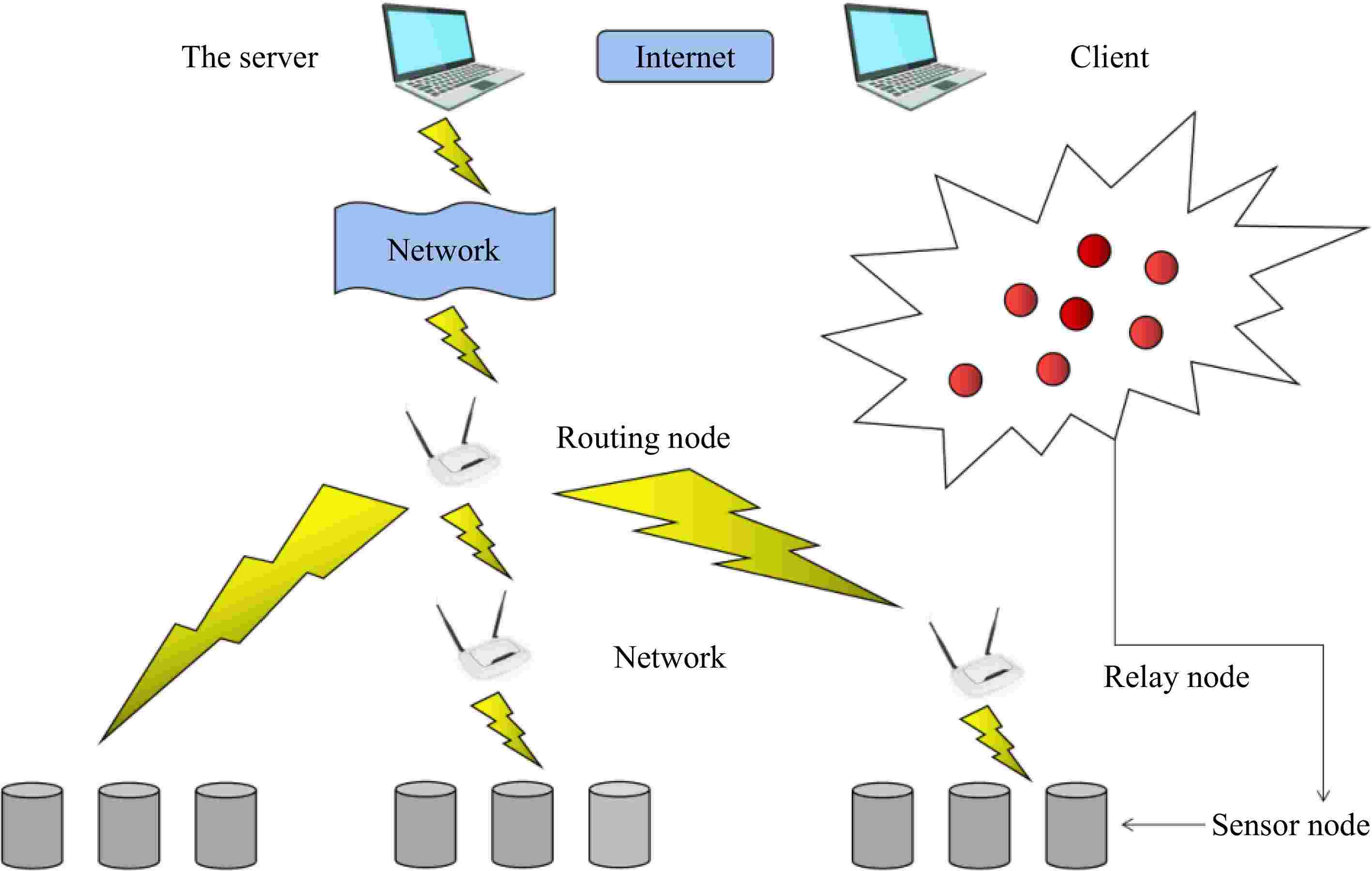


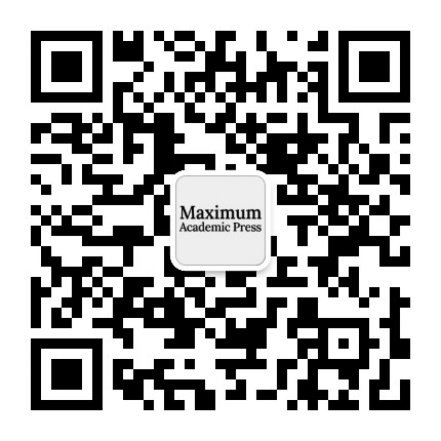
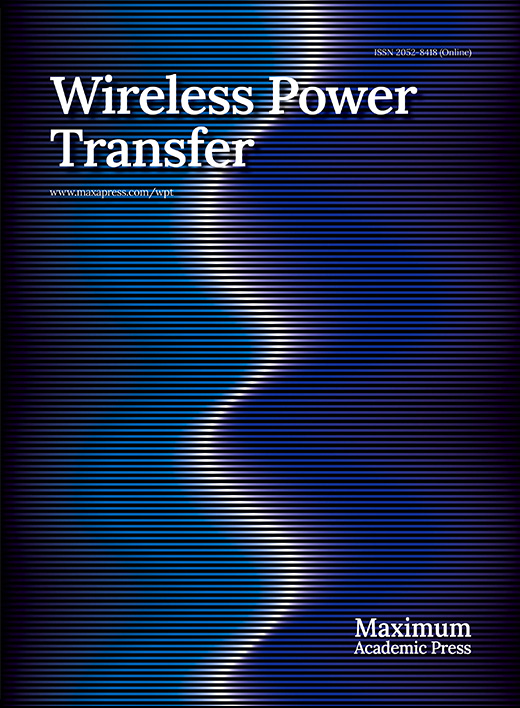





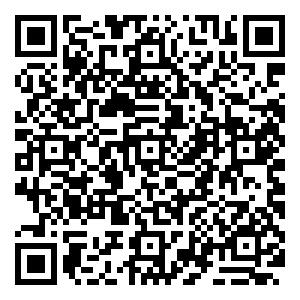
 DownLoad:
DownLoad:
